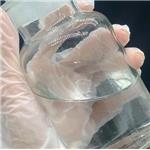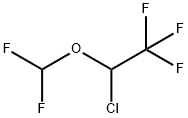Systemic effects of Isoflurane
Physical properties
Isoflurane is a halogenated ethyl methyl ether (1-chloro-2,2,2-trifluoroethyl difluoromethyl ether) and is a geometric isomer of enflurane. Isoflurane is a clear, colourless, volatile liquid with a pungent odour. It is presented in amber-coloured bottles and requires no preservatives for storage. It is stable, does not react with metal or other substances and is non-flammable in clinical concentrations.
Uses
Maintenance of general anaesthesia.
Treatment of severe asthma in patients requiring mechanical ventilation in ICU.
Systemic effects
RS:
• Dose-dependent depression of ventilation with depression of the ventilatory response to carbon dioxide. • Decrease in tidal volume but an increase in ventilatory rate in the absence of opioid drugs.
• Respiratory tract irritation and laryngospasm, making inhalational induction unfavourable.
• Inhibition of hypoxic pulmonary vasoconstriction (thereby increasing shunt fraction).
• Bronchial smooth muscle relaxing properties, particularly in the context of bronchoconstriction caused by histamine and acetylcholine.
CVS:
• Dose-related reduction in MAP, primarily by reduction in systemic vascular resistance (SVR), although isoflurane also has a negatively inotropic effect.
• Reflex tachycardia.
• Arrhythmias are uncommon, and there is little sensitisation of the myocardium to catecholamines.
• Coronary vasodilatation with the possibility of ‘coronary steal’. Dilatation in normal coronary arteries offers a low resistance to flow and may reduce perfusion through stenosed neighbouring vessels, causing distalischaemia. However, although this remains a theoretical concern, it does not appear to be of any clinical significance.
CNS:
• Causes general anaesthesia and reduction in cerebral metabolic rate.
• At concentrations >1 MAC causes cerebral vasodilatation and increases cerebral blood flow (CBF), leading to raised ICP.
• Does not cause seizure activity on the EEG.
• Induces dose-dependent muscle relaxation and depression of neuromuscular transmission with potentiation of non- depolarising neuromuscular blocking agents (NMBAs).
GI/GU:
• Reduction in renal blood flow, although this is not thought to affect renal function in clinical use.
• Uterine relaxation.
• No effect on hepatic function or blood flow.
• Increased risk of postoperative nausea and vomiting (PONV).
Other:
• Trigger for malignant hyperthermia (MH).
Pharmacology
Uptake:
• With its relatively low blood/gas partition coefficient, alveolar and blood partial pressures equilibrate rapidly compared with older agents such as halothane but more slowly than desflurane and sevoflurane.
• Rate of recovery is slower than that associated with desflurane or sevoflurane because of its greater solubility (higher blood/gas partition coefficient).
Metabolism:
• Less than 0.2% metabolised by liver (defluorination via cytochrome P450 (CYP2E1) producing hexafluoroisopropanol (HFIP)).
Excretion:
• Majority of the delivered drug is excreted unchanged through the lungs.
• Less than 0.2% renal excretion; HFIP is excreted in urine after conjugation with glucuronic acid.
See also
Lastest Price from Isoflurane manufacturers

US $20.00-10.00/kg2024-05-29
- CAS:
- 26675-46-7
- Min. Order:
- 1kg
- Purity:
- 99.60%
- Supply Ability:
- 50tons

US $10.00/G2022-10-27
- CAS:
- 26675-46-7
- Min. Order:
- 1G
- Purity:
- 99.99%
- Supply Ability:
- 20MT

